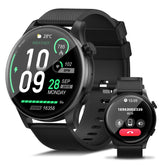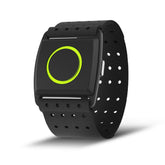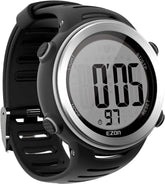The Importance of Heart Rate Sensors in Workout and Fitness Tracking
In the world of modern fitness, data is king—and few metrics are as transformative as your heart rate. At the core of this insight lies the heart rate sensor, a technology that has revolutionized how we approach workouts, recovery, and overall health. Whether you’re a casual exerciser or a professional athlete, understanding how these sensors work and why they matter can unlock new levels of performance and wellness.
How Heart Rate Sensors Enhance Your Training
A heart rate sensor is more than just a feature on your fitness tracker—it’s a window into your body’s effort. By measuring the number of times your heart beats per minute (BPM), these sensors provide real-time feedback on intensity, helping you:
1. Train at the Right Intensity
Your heart rate reflects how hard your cardiovascular system is working. Using zones based on your maximum heart rate (MHR), you can tailor workouts to specific goals:
- Zone 1 (50–60% MHR): Ideal for recovery or easy endurance training, improving oxygen efficiency.
- Zone 3 (70–80% MHR): Perfect for tempo runs or cycling intervals, boosting lactate threshold and speed.
-
Zone 5 (90–100% MHR): Reserved for short sprints, enhancing anaerobic capacity.
A fitness tracker wrist watch with a built-in heart rate sensor ensures you stay within your target zones, preventing undertraining or burnout.
2. Optimize Recovery
Rest is as crucial as work. Heart rate sensors monitor your resting heart rate (RHR)—a lower RHR over time signals improved fitness. They also track heart rate variability (HRV), a measure of the time between heartbeats that indicates stress levels and recovery readiness. Apps and devices use this data to recommend rest days or adjust workout intensity, ensuring you bounce back stronger.
3. Personalize Your Fitness Journey
No two bodies are the same. Heart rate data adapts to your unique fitness level, allowing you to set personalized goals. For example, a beginner might aim for Zone 2 during runs to build a base, while a seasoned athlete uses Zone 4 to push performance boundaries.
The Technology Behind Heart Rate Sensors
1. Wrist-Based Optical Sensors
Found in most fitness tracker wrist watch, these sensors use LED lights to detect blood volume changes in the capillaries (photoplethysmography, or PPG). They’re convenient for everyday use, offering continuous 24/7 tracking for workouts, sleep, and stress. Advanced models, like EZON’s heart rate series, feature multiple LEDs and algorithms to minimize motion interference, delivering accuracy comparable to chest straps during moderate to intense activities.
2. Chest Straps (Electrocardiogram, or ECG Sensors)
These provide clinical-grade accuracy by measuring the electrical signals of your heart. While less convenient for daily wear, they’re ideal for high-intensity workouts or when precision matters most (e.g., interval training, race pacing). Many wrist-based watches sync with chest straps for enhanced data during critical sessions.
Integrating Heart Rate Sensors with Apps and Devices
A heart rate monitor app (often paired with your fitness tracker) acts as a command center for your data. These apps analyze trends, generate reports, and even create customized plans:
- Workout Analysis: See how your heart rate responded to a run or bike ride, identifying peaks, valleys, and time spent in each zone.
- Goal Setting: Set targets for calorie burn, time in specific zones, or average heart rate during workouts.
- Health Insights: Track long-term trends in resting heart rate and HRV, linking them to lifestyle factors like sleep quality and stress levels.
The best devices, like EZON’s heart rate watches, seamlessly sync with popular apps (Strava, TrainingPeaks, etc.), ensuring your data is always at your fingertips.
Choosing the Right Heart Rate Sensor for Your Needs
1. Accuracy vs. Convenience
- Casual Users: A wrist-based sensor with built-in algorithms for motion correction (e.g., EZON’s ECG heart rate watch) offers a balance of ease and precision.
- Serious Athletes: Pair a wrist tracker with a chest strap for races or intense intervals, leveraging the best of both technologies.
2. Battery Life and Durability
Look for devices that last through your longest workouts (10+ hours in GPS mode) and are water-resistant (5ATM or higher) for swimming or rainy runs.
3. Additional Features
GPS for route tracking, multi-sport modes, and sleep monitoring enhance the value of a heart rate-equipped fitness watch, making it a versatile tool for all aspects of your wellness journey.
Elevate Your Fitness with Heart Rate Technology
From guiding workout intensity to optimizing recovery, heart rate sensors are the cornerstone of data-driven fitness. By integrating this technology into your routine via a fitness tracker wrist watch or dedicated monitor, you gain the power to train smarter, recover better, and achieve goals you once thought out of reach.
Don’t just guess how hard you’re working—let your heart rate data lead the way. Explore EZON’s range of heart rate monitors and fitness watches designed to turn every workout into a step toward peak performance.









